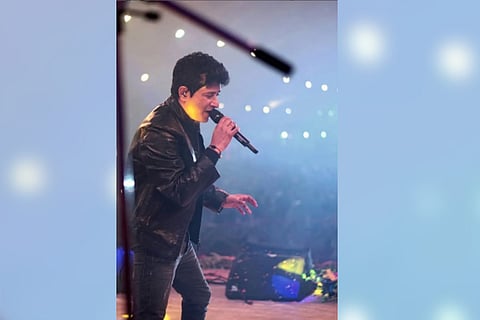

Renowned playback singer Krishnakumar Kunnath, popularly known as KK, had several heart blockages and he could have been saved if CPR was administered on time, a doctor who conducted the autopsy said on Thursday, June 2. KK died on Tuesday night due to a massive cardiac arrest after a live performance at Nazrul Mancha in Kolkata. "He had a major blockage in the left main coronary artery and small blockages in various other arteries and sub-arteries. Excessive excitement during the live show caused stoppage of blood flow leading to cardiac arrest that claimed his life," the medical practitioner told PTI on condition of anonymity. KK could have been saved if someone had administered cardiopulmonary resuscitation (CPR) immediately after he fell unconscious, the doctor said.
CPR is a lifesaving emergency procedure that anyone from the general public, even those who aren’t trained health workers, can perform on someone when their heart stops beating and they become unresponsive. The procedure needs to be performed to keep the person alive while waiting for trained medical professionals to arrive. CPR must be performed immediately after a person suffers a cardiac arrest, to keep their blood flow active and raise their chances of surviving.
The procedure involves chest compressions and artificial ventilation (or mouth-to-mouth resuscitation) to manually maintain brain function until further steps are taken to restore normal blood circulation and breathing in a person experiencing cardiac arrest. The Indian Medical Association stresses the urgency of performing CPR on an unresponsive patient and says that for every minute that goes by without anyone doing anything, the odds of survival are reduced by 10%. If there’s no intervention within four minutes of cardiac arrest, irreversible brain damage starts to set in and after 10 minutes of inaction, the person could be dead, IMA says.
These are the steps to be followed while giving CPR, according to the American Red Cross:
> Check the scene for safety
> Check if the person is responsive by tapping them near the shoulder and shouting loudly asking questions, to see if they respond
> If there is no response, and there is no breathing (or only abnormal breathing or gasping), call for an ambulance or ask a bystander to do so
> Begin CPR with chest compressions:
Place your hands at the centre of the person’s chest, with your shoulders directly above the hands and your elbows locked.
For an adult victim, you can perform chest compressions at a rate of 100 to 120 compressions per minute to a depth of at least 5 cm or 2 inches, the American Heart Association’s CPR guidelines suggest. The chest must be allowed to return to its normal position after each compression.
> Mouth-to-mouth breaths:
The rescuer must give two breaths to the victim, after lifting their chin to open their airway. Each breath must last for about a second and make the chest rise. Air must be allowed to exit before giving the next breath, Red Cross says. It also says that if the first breath does not cause the chest to rise, the victim’s head must be tilted again to ensure a proper seal before the second breath.
> Continue giving sets of 30 chest compressions and two mouth-to-mouth breaths
The American Heart Association’s CPR guidelines suggest compression-only CPR, or hands-only CPR (without mouth-to-mouth breaths) for untrained bystanders among the general public, while those who are trained to perform CPR are advised to give conventional CPR.
The doctor who conducted the autopsy said that KK had prolonged cardiac problems which remained unaddressed. "The vocalist had 80% blockage in the left main coronary artery and small blockages in various other arteries and sub-arteries. None of the blockades was 100%. During Tuesday's performance, the singer was walking around and at times dancing with the crowd which created excessive excitement that caused stoppage of blood flow leading to cardiac arrest," he said.
The doctor said that excessive excitement stopped blood flow for a few moments resulting in an irregular heartbeat for a very short time. "As a result, KK fell unconscious and had a cardiac arrest. If CPR had been given immediately, the artiste could have been saved," he said. The doctor said the autopsy revealed that the singer was on antacids "probably considering some pain which he mistook as digestive problems".
Incidentally, a senior officer of Kolkata Police revealed that the singer's wife has admitted that KK used to take a lot of antacids. "He had told his wife during a telephonic conversation of experiencing pain in his arm and shoulders," the IPS officer said. Police have also recovered several strips of antacids from the hotel room where KK was staying.
The post-mortem examination, which lasted for nearly an-hour-and-a-half and was videographed, has rejected any foul play and suggested that the singer died because of a massive cardiac arrest after an almost three-hour performance. Police had registered a case of unnatural death and started an investigation. The vocalist, who is known for his versatility, has sung in different languages including Tamil, Telugu, Kannada, Malayalam, Marathi and Bengali.
Initial hits such as 'Pal' and 'Yaaron' made KK popular among the youth of the country. As a playback singer, he has popular songs in films across languages.
Read:
With PTI inputs